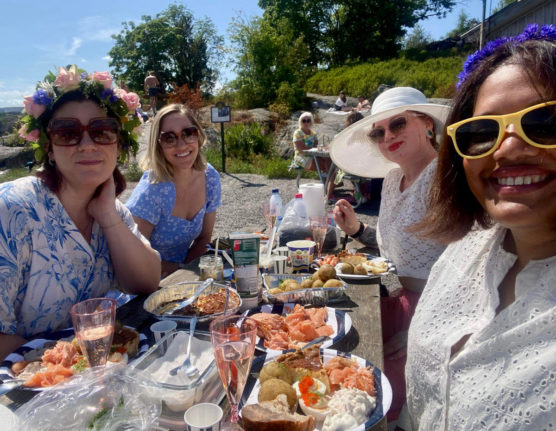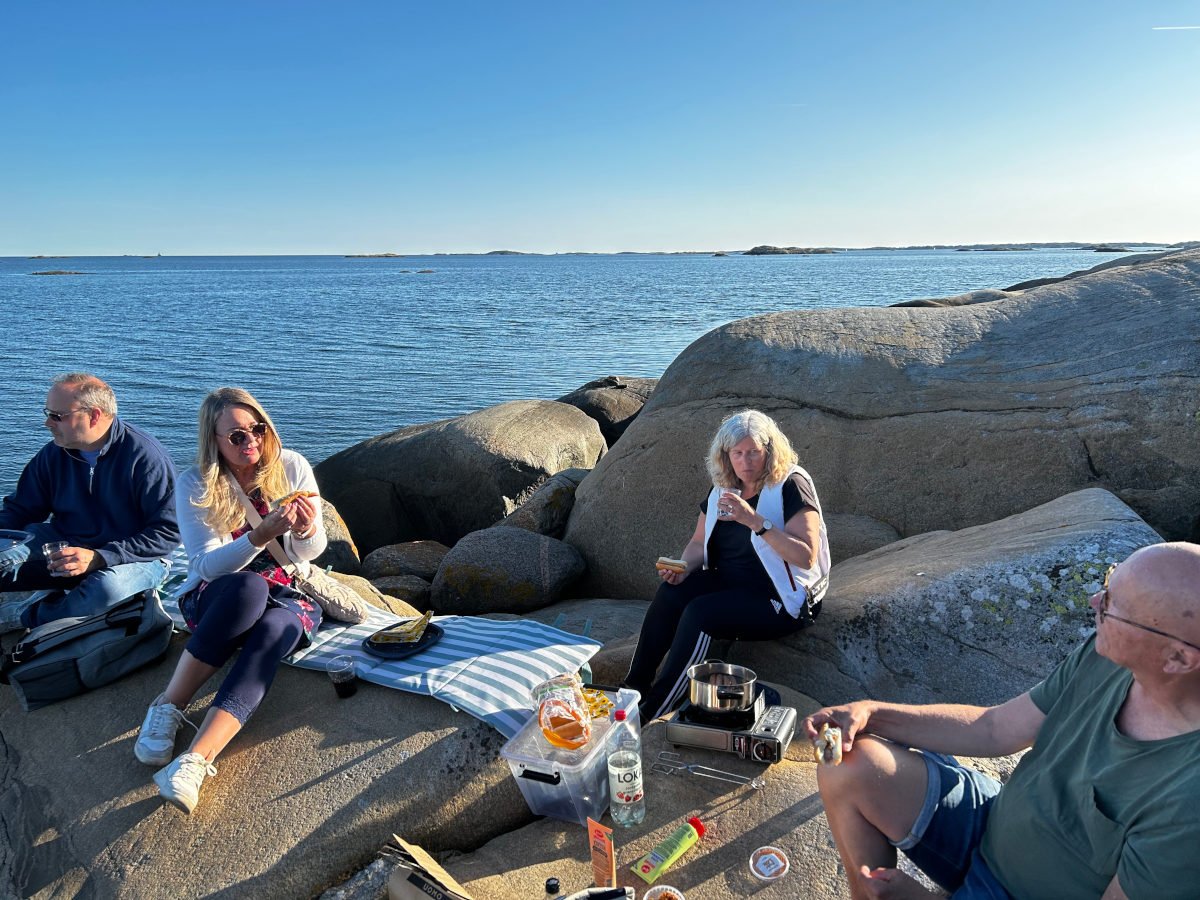You start seeing lit candles everywhere
Sweden’s cold, dark winter is a marathon rather than a sprint, and one of the ways people in Sweden survive is by doing whatever they can to make it feel more cosy or mysigt.
In the height of summer, you won’t find many people lighting candles (it’s too warm and so light outside that you can barely see the flame anyway), but the return of dark evenings and bad weather means that all your Swedish friends will have put out their designer candlesticks again (those ones they were given by their grandma when they graduated high school) next time you visit.
You have to use bike lights again
During the summer, it’s easy to forget sometimes that it actually gets dark, as you find yourself cycling around in semi-permanent daylight.
At some point around the end of September, this will change, and you’ll find yourself frantically checking every drawer and cupboard in your home to find the bike lights you stashed away somewhere around the end of April and haven’t used since.
If you drive, there’ll be a few weeks when you notice more cyclists than usual on the roads without proper lights, uttering some choice words under your breath when they appear out of nowhere right in front of you, dressed all in black, making them almost invisible in the dark.
The automatic out-of-office emails have finally stopped
Swedes take famously long summer holidays lasting anywhere from three to five weeks, with the height of the summer absences taking place in June and July.
This doesn’t stop some people – usually those without school-aged children – from travelling in the off season in August or September to skip the crowds or save a bit of money.
Anyone who has tried to work during the summer in Sweden knows how irritating it can be having to effectively put everything on hold while your colleagues are off on a sandy beach (or in a red wooden summer house) somewhere, with every email you send answered with an out-of-office reply.
If this wasn’t bad enough, the three week holidays are just long enough for your colleagues to forget whatever they were working on before they left for Thailand (or Gotland), meaning people have only just got back into the swing of things by the autumn.
Everyone starts talking about mushrooms for some reason
At some point in September, everyone you know will start talking about svamp and planning trips to the nearest forest, hoping to come back with a basket full of chanterelles. If you’re lucky, they might share some of their haul with you, but don’t expect an invite to their mushroom-hunting spot unless you know them very well.
As autumn progresses, expect the conversation to move on to bärplockning (berry-picking), with Swedish blueberries (technically bilberries), blackberries, lingonberries, rowanberries, cranberries and sea buckthorn all fruiting well into the autumn.
Daylight is suddenly limited to working hours
After months of relying on blackout blinds to get enough sleep, one day your alarm will go off (at the usual time) and the darkness outside will have you convinced it’s the middle of the night.
Unfortunately, it’s just autumn. Sunrise seems to get exponentially later during the month of September, while sunset gets earlier, until you realise that you wake up in the dark, go to work in the dark and head home in the dark. If you have children at school or preschool, you probably won’t see them in daylight again until April (okay, maybe on weekends).
Swedes go into hibernation
The unspoken pressure to go outside and enjoy the good weather during summer finally subsides in autumn, which can be a blessing rather than a curse. Finally it’s socially acceptable to wrap yourself up in a blanket on the sofa with a hot chocolate and catch up on all the series you didn’t manage to watch over summer, as you were too busy off frolicking somewhere remote in the Swedish nature.
You no longer constantly feel a pressure to actually do something, and you can just exist for the next few months. The flipside of this is that you’re probably going to see a lot less of your friends during autumn and winter, as everyone goes into hibernation before emerging bleary-eyed out of their blanketed, tastefully-lit (by candlelight, of course) caves in spring.
Uteserveringar start to vanish
Sweden’s restaurants and cafes take over half of the pavements in many cities from about April to October with outdoor seating areas or uteserveringar. These are popular not just for the restaurant owners, who are able to double the number of tables on offer for half of the year, but also for customers, who can enjoy an outdoor drink or meal while watching the world go by.
Despite the fact that most of these serving spots are furnished with heaters and blankets (it’s not always actually warm enough to eat outside in Sweden without them, even during summer), most of them end up disappearing once the colder weather really sets in.
Granted, the city does feel a lot more empty when the outdoor serving areas have disappeared, but it is also quite nice to be able to walk down the street without having to dodge tables for a few months.





 Please whitelist us to continue reading.
Please whitelist us to continue reading.
Member comments